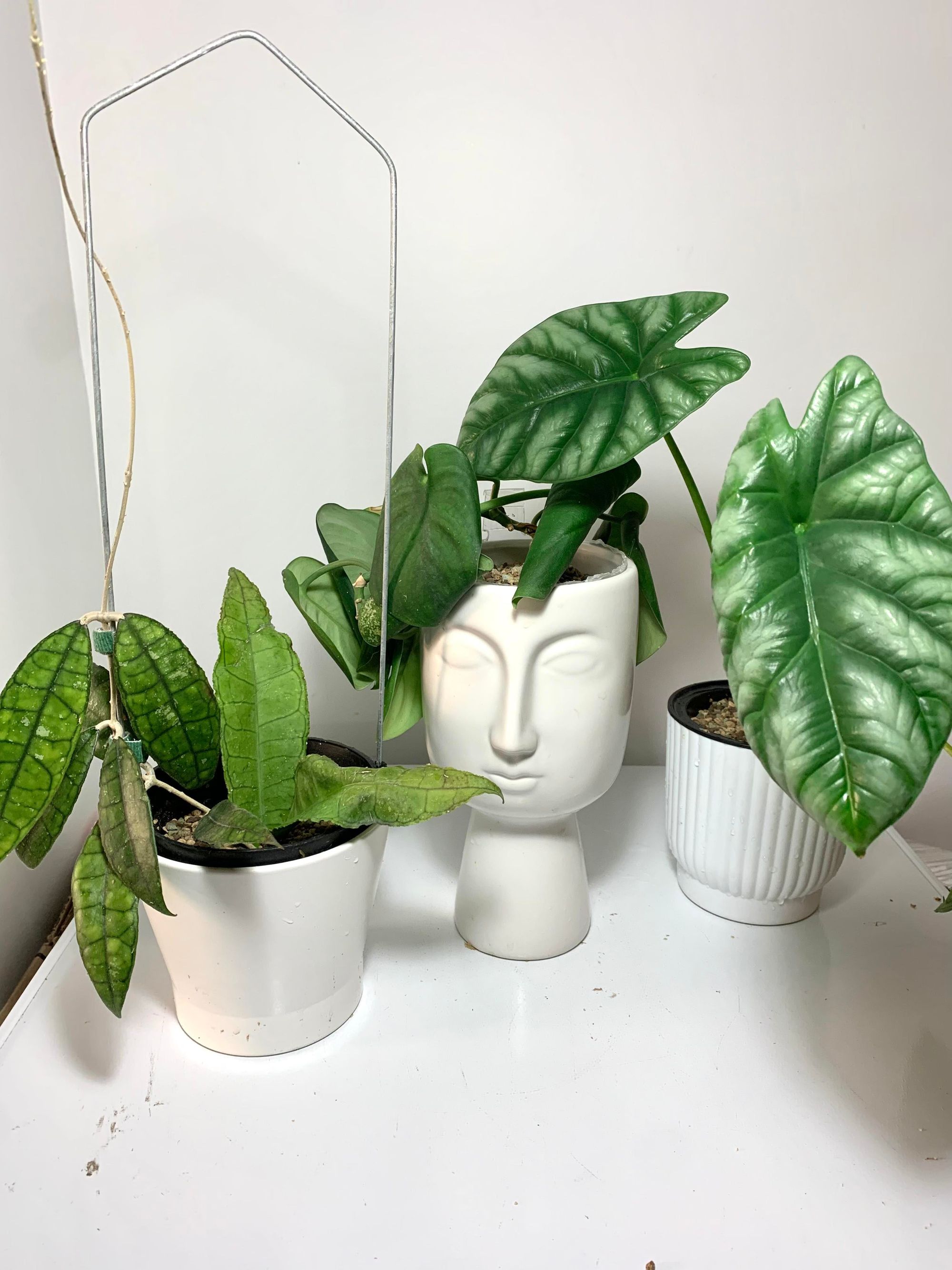Lechuza Pon Conversion 101: Soil-Free Planting
An overview of Lechuza Pon, the benefits of using it, and how to convert plants to pon.
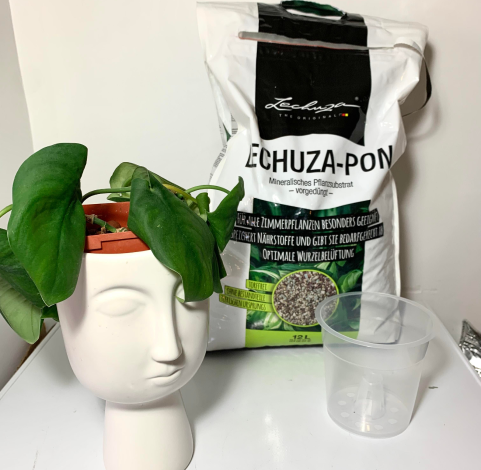
Since getting a puppy, I have been putting off plant care and repotting for a while. Now that my shiba, Yuki, can finally chill, I got some repotting done! In this blog post, I will explain what Lechuza Pon is, discuss its pros and cons, and how I convert my plants to pon.
Note: This approach is just what has worked for me on the plants I have converted so far. There are many approaches to converting to pon, no one right approach. I have figured out what works best for me by experimenting and learning some hard lessons aka killing some plants 😀! Hopefully this will work for you too! Thank you for reading.
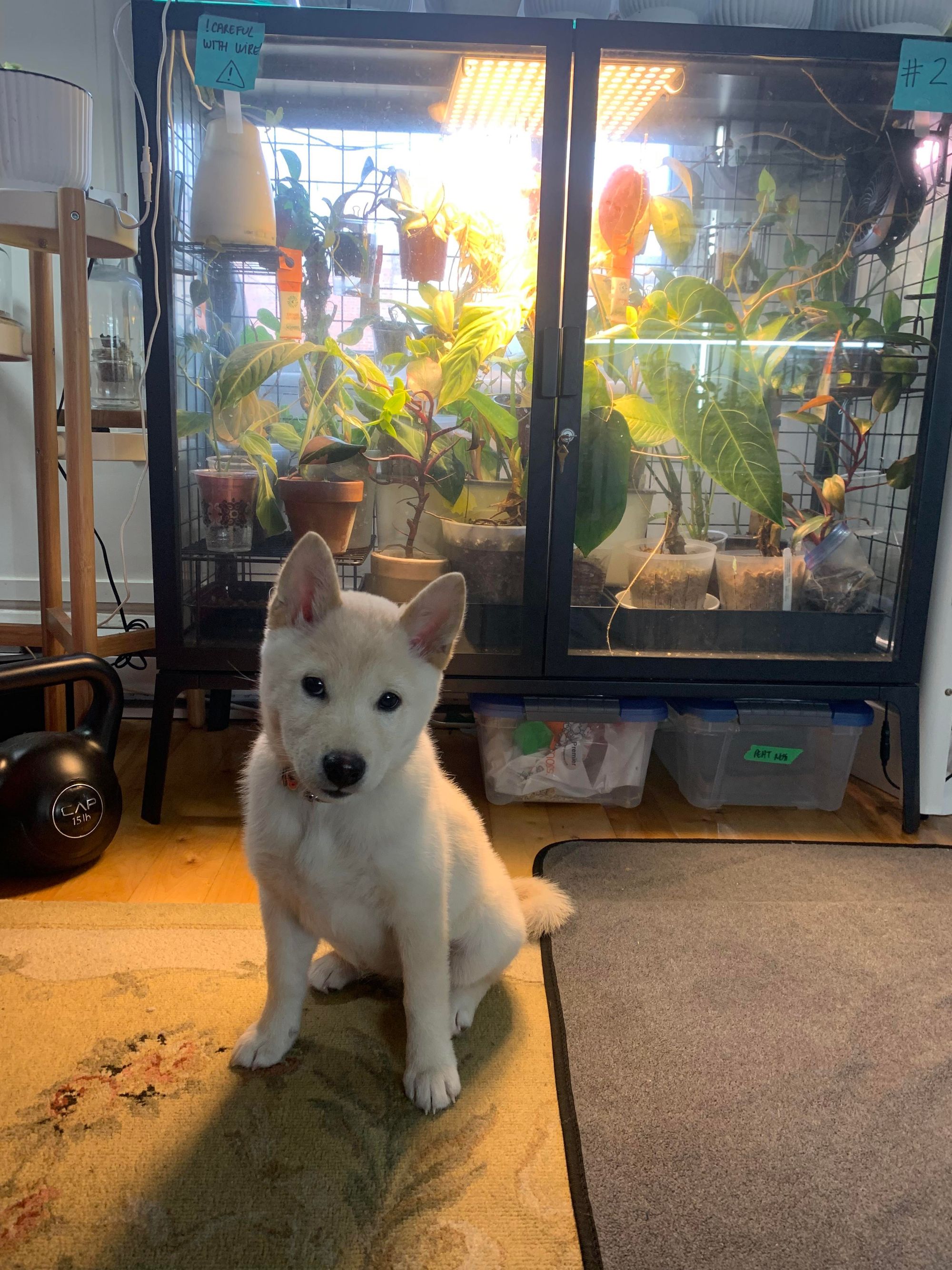
What is Lechuza Pon?
Lechuza Pon is a soil-free mineral-based substrate comprised zeolite, pumice, lava rock, and slow-released fertilizer. Pon can be used in place of soil for most plants.
What are the benefits of these minerals?
- Zeolite: absorbs & holds water and nutrients
- Pumice: moisture regulation & aeration
- Lava rock: porous for good drainage
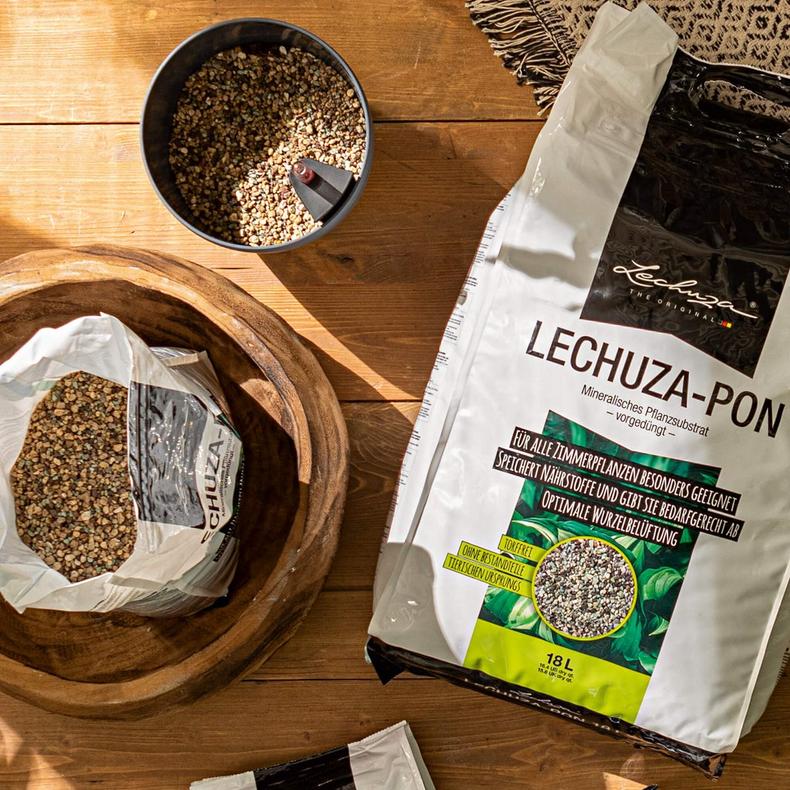
Pros of Lechuza Pon:
- Soil-free
- Works with most plants
- Good aeration for robust root growth
- Can be re-used for years
- Contains fertilizer for up to 6 months
- Continuous capillary action so water is drawn upwards
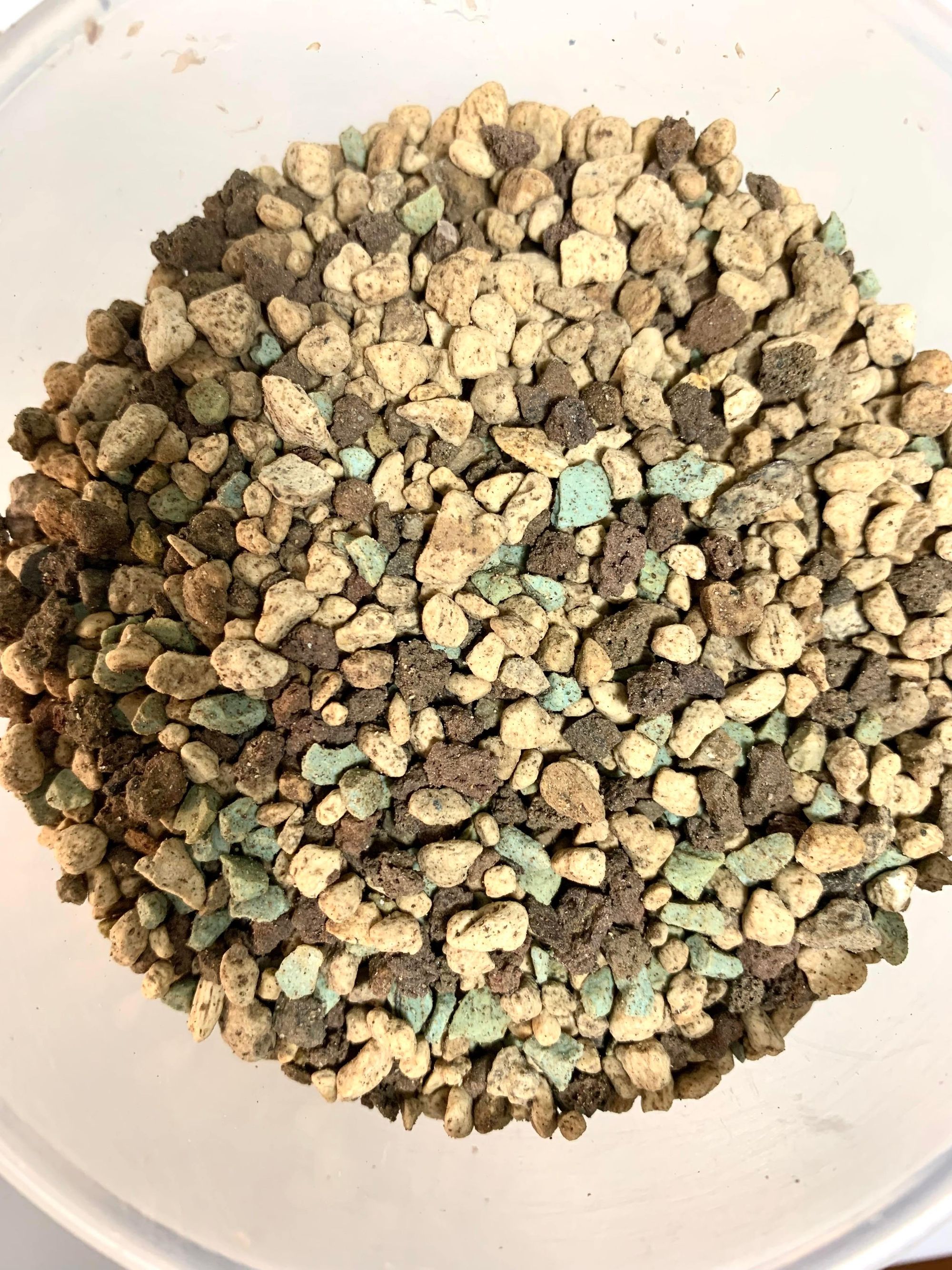
Cons of Lechuza Pon:
- Not cheap - 6L for $18.99, 12L for $34.99, 18L for $47.99
- ALWAYS SOLD OUT (Sign up for restock notifications on their website)
- Can still get pests
What plants work well in pon?
- Hoyas
- Aroids (alocasias, anthurium, philodendrons, etc.,)
- Begonias
- Calatheas (I haven't personally tried but have seen some success stories with calathea white fusion)
How to convert a plant to pon:

Preparation step: Water plant before conversion!
Converting a plant to another media can be stressful so it is not the best idea to transfer a plant that is already suffering. I always thoroughly water the plant in it's current media BEFORE transferring it.
I will water the plant using the shower method in its existing media to start.
Step 1: Clean the roots!
I will be converting this scindapsus pictus 'jade satin' commonly known as jade satin pothos to Lechuza Pon. She has been potted in New Zealand sphagnum moss for over a year now, well over due for a repotting. As you can see, the root system has grown pretty extensively in the sphagnum moss.
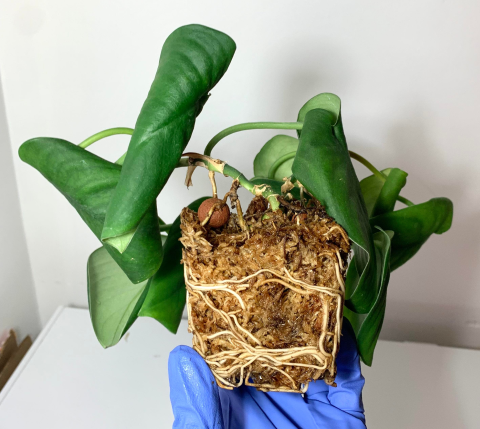
Removing the roots from the moss isn't the nightmare it seems, here are some tips to make it easier:
- Wet the moss! It's much easier to remove roots from wet vs. dry moss.
- Soak the moss in a bowl of water for 5-10 minutes, moss should become loose.
- Be patient! Gently massage the roots and take your time.
- Forgive yourself for the inevitable broken roots!
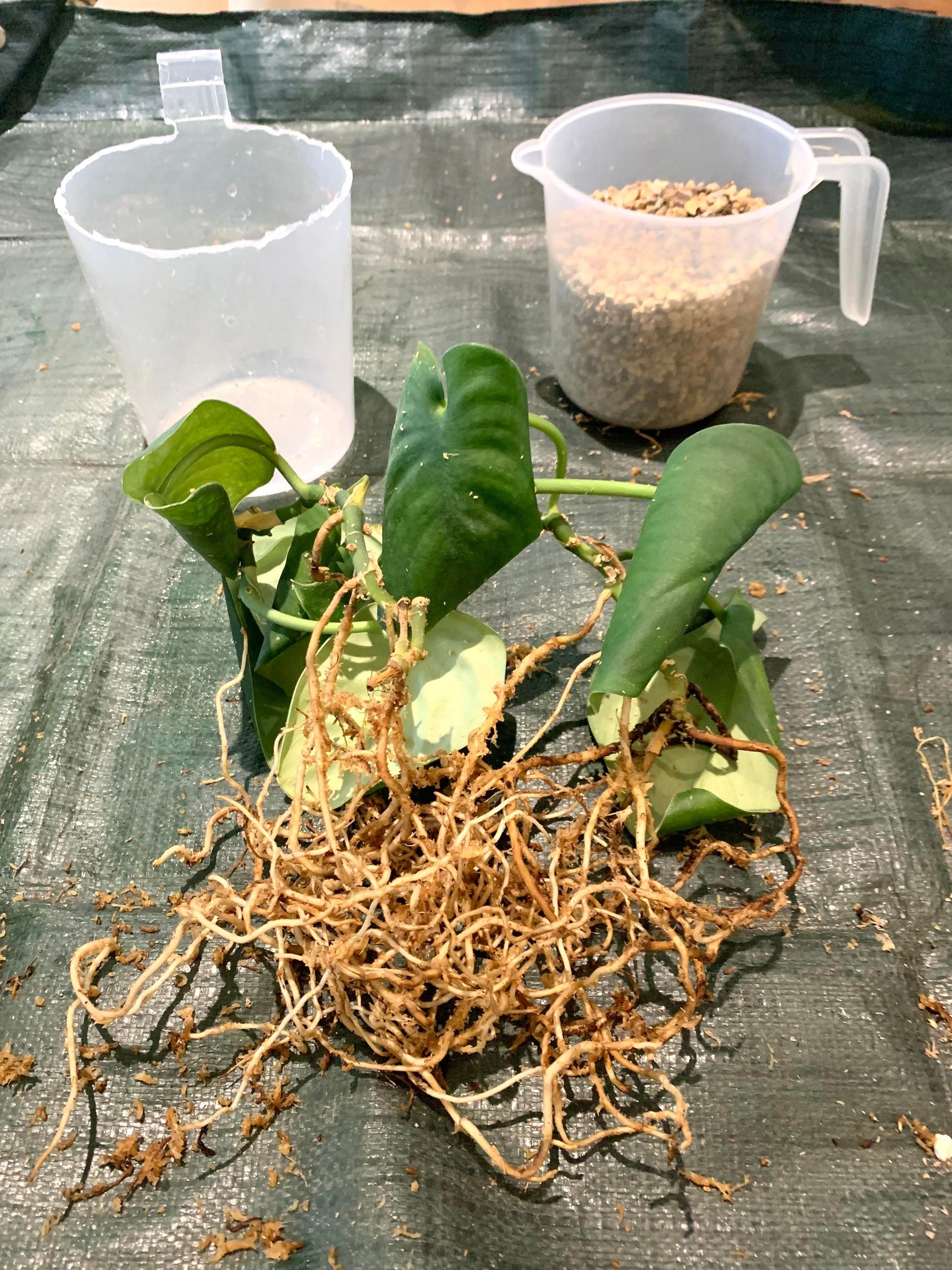
Frequently asked questions:
What about transferring a plant from soil or LECA? Same concept, just make sure you clean the roots of as much soil as possible. Step 4 is the most pertinent step to avoid root rot.
Should you re-root a plant when you're converting it to pon? Yes, you can if you want to, but I have successfully transferred many plants from moss and soil to pon this way. The most important step to ensure a smooth transition is Step 4: Do not water for 2 weeks after repotting!
Do I have to root a cutting in pon or can I just transfer a plant from soil? Both can be done, depends on your comfort level. I have rooted cuttings and transferred full plants from moss and soil to pon. The most important thing to ensure a smooth conversion to pon is to once again, abide by Step 4: Do not water for 2 weeks after repotting! This means do not fill the reservoir with water, do not get the pon wet. This allows the roots to acclimate to the new media.
Reservoir or not? I prefer using a reservoir with an inner pot that I can flush out every now and then. I find it very difficult to flush out pots without holes as I always dump out some pon as well. Typically, I will use self-watering pots either purchased or DIY with an inner pot and an outer reservoir with wicks.


Step 2: Dry sift the pon (Optional step)
While you have been handling the pon, you've probably noticed it's quite dusty. This step is optional as Lechuza doesn't recommend cleaning before potting. You can dry sift the pon with a fine sieve.
I do not recommend rinsing with water and potting without letting the pon dry. I have tried this before and unfortunately got root rot quite quickly. If you wish to rinse with water, give adequate time for the pon to dry off before using.
Step 3: Choose pot
I prefer using transparent plant pots because I can monitor the root growth. Today, I used a take-out soup container which fit perfectly in my planter. I always save these containers as they make great pots. I just add drainage with a soldering iron by adding holes in the bottom and sides of the container.




Step 3.5: Add plant and fill pot with pon
- Add some pon to the bottom of the pot, enough to cover the bottom. (If the holes are too big
- Place plant into the pot.
- Fill pot with pon.
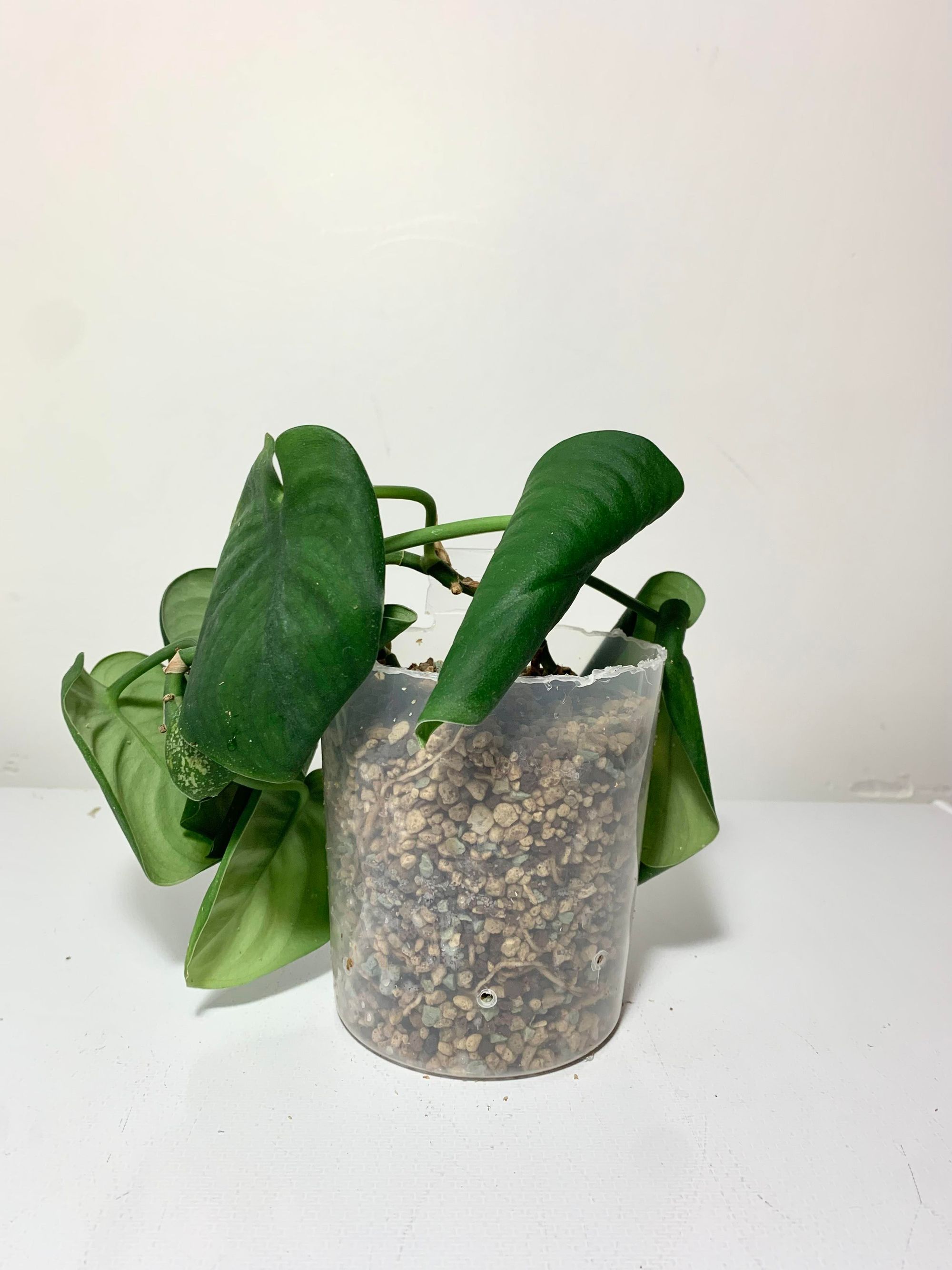
Step 4: Do not water for at least 1 week!
Most important step is to NOT water the plant for 1 week (with some plants I have waited 2 weeks). During this period, the plant becomes acclimated to the pon, watering right away will increase the likelihood of root rot. Trust me, I have learned the hard way 😥 RIP 3 leaves of my Thai constellation monstera (I was able to save it from root rot).
After 1-2 weeks have passed, add water to the reservoir. Refill the reservoir whenever you notice it empty.
Troubleshooting & Questions:
- Plant looks thirsty: If the plant looks thirsty, but not dying (e.g., yellowing leaves, dropping leaves, soft stem), I will add some water to the reservoir even before 1 week is over.
- My plant will die if I don't water it for that long: I always make sure to water the plant very thoroughly BEFORE the conversion to ensure it doesn't dry out. But as above, there are situations in which I would add water and feel comfortable.
- What about rooting cuttings?: When I use pon to root, I will water the pon with the shower method and keep it in a clear plastic container - this will keep it humid.
- What is this so-called 'shower method' you keep referring to? Bring your plant to a sink or shower and let water run through the pot until it runs out the bottom. Saturating all of the media heavily. Allow pot to stop dripping in the sink/shower and return to shelf.
Here are some other plants I pon-verted today!
